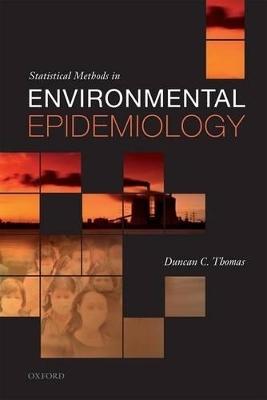
Statistical Methods in Environmental Epidemiology
Oxford University Press (Verlag)
978-0-19-923290-1 (ISBN)
Environmental epidemiology is the study of the environmental causes of disease in populations and how these risks vary in relation to intensity and duration of exposure and other factors like genetic susceptibility. As such, it is the basic science upon which governmental safety standards and compensation policies for environmental and occupational exposure are based. Profusely illustrated with examples from the epidemiologic literature on ionizing radiation and air pollution, this text provides a systematic treatment of the statistical challenges that arise in environmental health studies and the use epidemiologic data in formulating public policy, at a level suitable for graduate students and epidemiologic researchers.
After a general overview of study design and statistical methods for epidemiology generally, the book goes on to address the problems that are unique to environmental health studies, special-purpose designs like two-phase case-control studies and countermatching, statistical methods for modeling exposure-time-response relationships, longitudinal and time-series studies, spatial and ecologic methods, exposure measurement error, interactions, and mechanistic models. It also discusses studies aimed at evaluating the public health benefits of interventions to improve the environment, the use of epidemiologic data to establish environmental safety standards and compensation policy, and concludes with emerging problems in reproductive epidemiology, natural and man-made disasters like global warming, and the global burden of environmentally caused disease. No other book provides such a broad perspective on the methodological challenges in this field at a level accessible to both epidemiologists and statisticians.
Dr. Thomas is Professor of Preventive Medicine, Director of the Biostatistics Division, and Verna R. Richter Chair in Cancer Research at the University of Southern California Keck School of Medicine. He received his undergraduate degree from Haverford College, an M.S. in Mathematics from Stanford University, and a Ph.D. in Epidemiology and Biostatistics from McGill University in 1976. His primary research interest has been in the development of statistical methods in epidemiology, both environmental and genetic. He was a member of President Clinton's Advisory Committee on Human Radiation Experiments, as well as the National Academy of Sciences Committee on the Biological Effects of Ionizing Radiation (BEIR V), and radiation advisory committees for other governmental agencies. Dr. Thomas has many publications in statistical genetics, including the textbook Statistical Methods in Genetic Epidemiology (OUP, 2004), and is a past President of the International Genetic Epidiology Society.
PREFACE ; 1. A Tale of Two Exposures: Ionizing Radiation and Air Pollution ; 2. Basic Epidemiologc Studies ; 3. Basic Statistical Methods ; 4. Multivariate Models ; 5. Some Special Purpose Designs ; 6. Modeling Exposure-Time-Response Relationships ; 7. Longitudinal Models ; 8. Time Series Models for Acute Effects ; 9. Spatial Models ; 10. Ecologic Interference ; 11. Measurement Error and Exposure Models ; 12. Multiple Risk Factors and Interactions ; 13. Mechanistic Models ; 14. Intervention Studies ; 15. Risk Assessment ; 16. Probability of Causation and Compensation ; 17. Further Challenges ; REFERENCES ; INDEX
| Erscheint lt. Verlag | 26.2.2009 |
|---|---|
| Zusatzinfo | 66 line illustrations |
| Verlagsort | Oxford |
| Sprache | englisch |
| Maße | 156 x 233 mm |
| Gewicht | 671 g |
| Themenwelt | Mathematik / Informatik ► Mathematik ► Angewandte Mathematik |
| Mathematik / Informatik ► Mathematik ► Statistik | |
| Medizin / Pharmazie ► Medizinische Fachgebiete ► Arbeits- / Sozial- / Umweltmedizin | |
| Studium ► Querschnittsbereiche ► Epidemiologie / Med. Biometrie | |
| ISBN-10 | 0-19-923290-3 / 0199232903 |
| ISBN-13 | 978-0-19-923290-1 / 9780199232901 |
| Zustand | Neuware |
| Haben Sie eine Frage zum Produkt? |
aus dem Bereich


